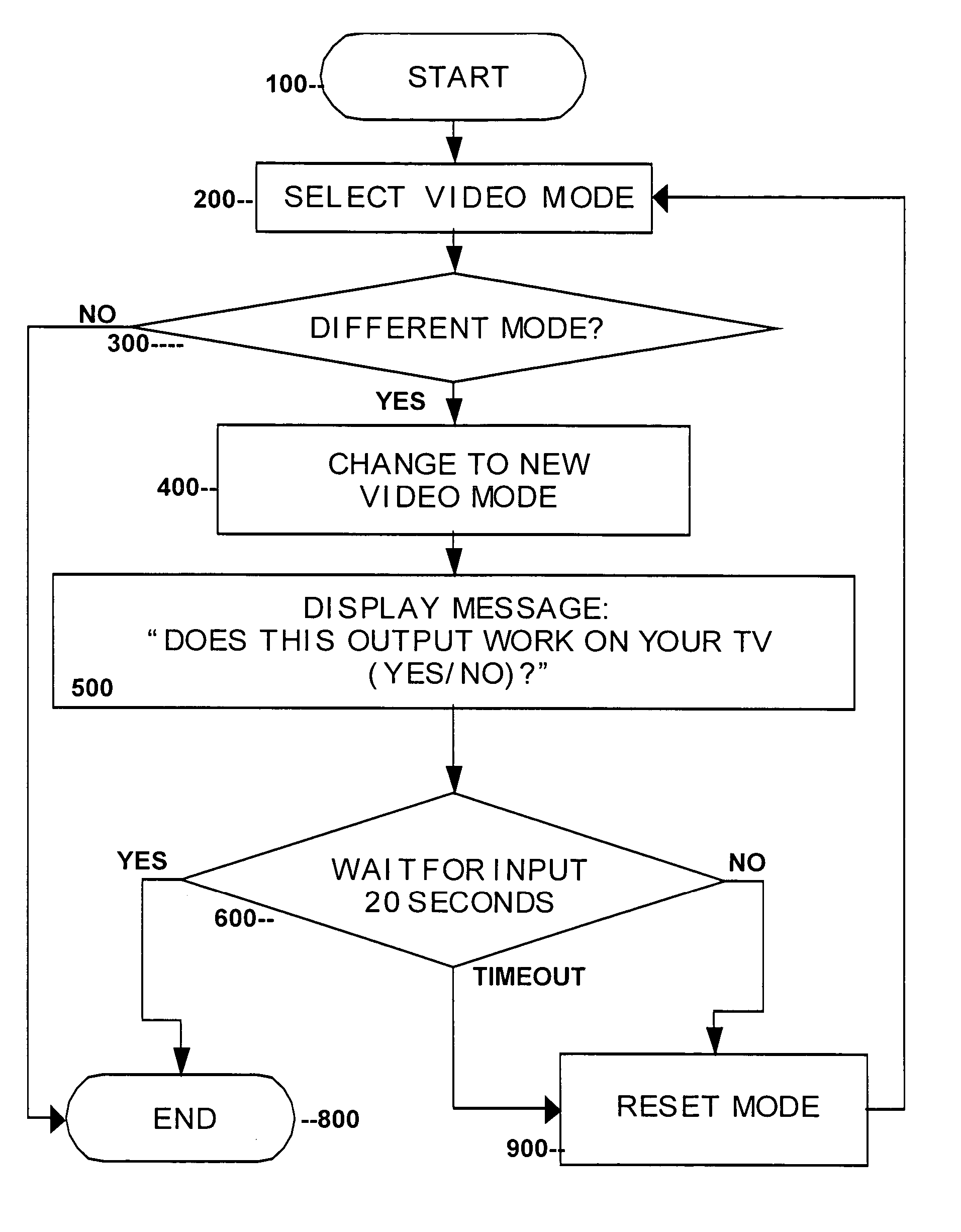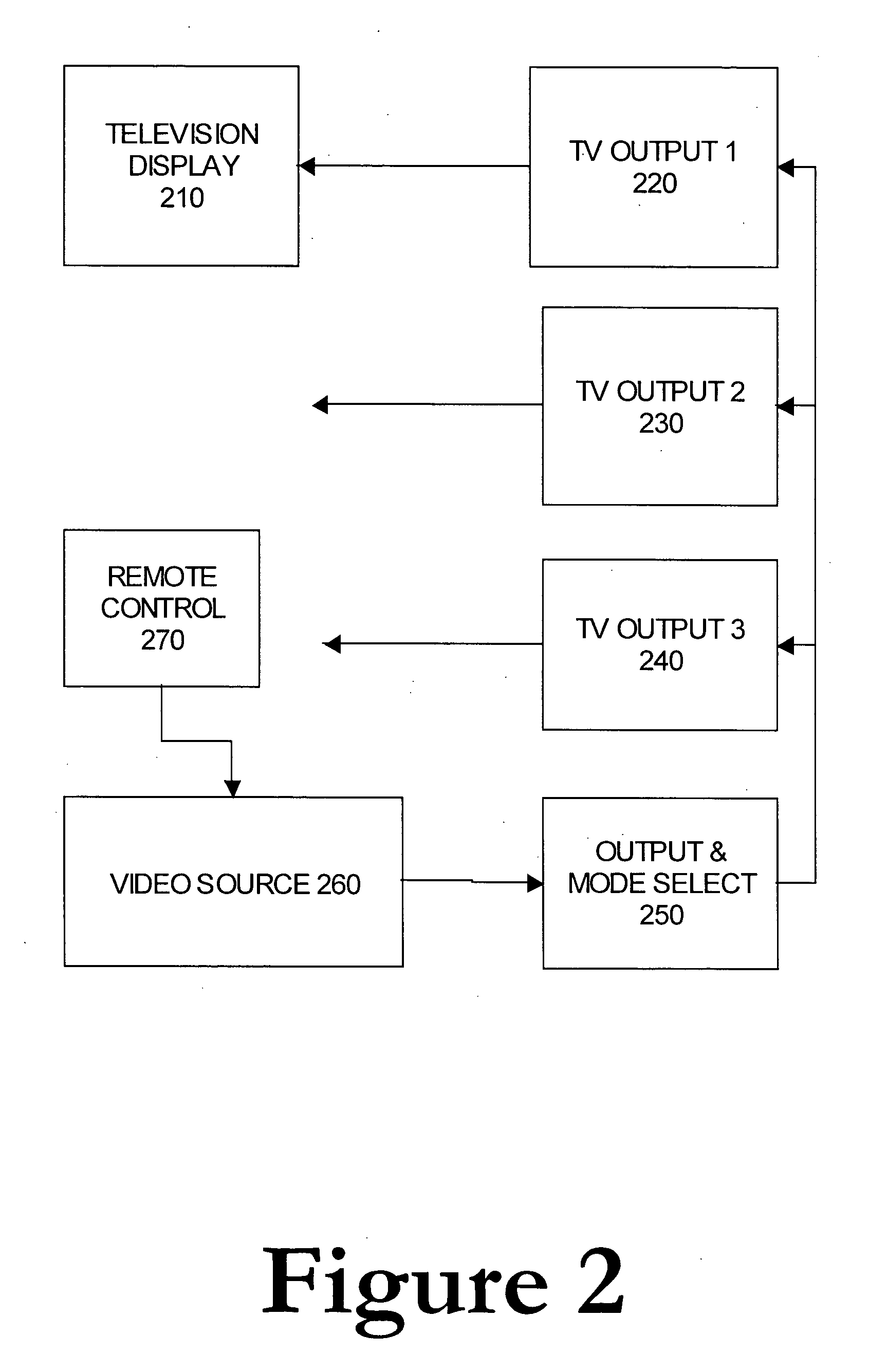Method and system for switching between video modes in consumer electronics
a technology of consumer electronics and video modes, applied in the field of consumer electronics dvd players and recorders, can solve the problems of user loss of video image output, no longer seeing the gui, and no longer being able to use the graphical user interface, dvd player or other consumer device defective, etc., to achieve the effect of eliminating the need for new hardware and improving customer satisfaction
- Summary
- Abstract
- Description
- Claims
- Application Information
AI Technical Summary
Benefits of technology
Problems solved by technology
Method used
Image
Examples
Embodiment Construction
[0015] Referring to FIG. 1, a process is described for selecting different video output modes for a consumer device. This process may represent a subroutine on microprocessor software or firmware running on a consumer electronic device such as a DVD player or player / recorder, or the like. For purposes of illustration, the process begins at block 100 which may represent a branching from an overall program used to operate the consumer electronic device.
[0016] At block 200, a user selects a video mode, preferably from a menu displayed on a setup screen or option screen or the like, displayed on a television display connected to the consumer video device. The user selects a video mode from a menu containing a list of possible output modes by scrolling down the list and selecting one option using the OK or ENTER key on the remote control or on the control panel of the consumer electronic device. As noted above, examples of such different video modes may include, but are not limited to, ...
PUM
 Login to View More
Login to View More Abstract
Description
Claims
Application Information
 Login to View More
Login to View More - R&D
- Intellectual Property
- Life Sciences
- Materials
- Tech Scout
- Unparalleled Data Quality
- Higher Quality Content
- 60% Fewer Hallucinations
Browse by: Latest US Patents, China's latest patents, Technical Efficacy Thesaurus, Application Domain, Technology Topic, Popular Technical Reports.
© 2025 PatSnap. All rights reserved.Legal|Privacy policy|Modern Slavery Act Transparency Statement|Sitemap|About US| Contact US: help@patsnap.com



